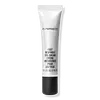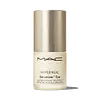What's inside
What's inside
 Key Ingredients
Key Ingredients

 Benefits
Benefits

 Concerns
Concerns

 Ingredients Side-by-side
Ingredients Side-by-side

Dimethicone
EmollientIsododecane
EmollientWater
Skin ConditioningPolysilicone-11
Polyethylene
AbrasiveButylene Glycol
HumectantCyclopentasiloxane
EmollientHexyldecyl Stearate
EmollientCaffeine
Skin ConditioningTocopheryl Acetate
AntioxidantSodium Hyaluronate
HumectantRetinyl Palmitate
Skin ConditioningYeast Extract
Skin ConditioningTriticum Vulgare Germ Oil
EmollientHordeum Vulgare Extract
EmollientPyrus Malus Fruit Extract
Skin ConditioningCucumis Sativus Fruit Extract
EmollientHelianthus Annuus Seed Oil
EmollientCentella Asiatica Extract
CleansingSaccharomyces Lysate Extract
HumectantSqualane
EmollientMethyldihydrojasmonate
MaskingPhytosphingosine
Skin ConditioningQuaternium-18 Bentonite
Propylene Carbonate
SolventPolymethyl Methacrylate
Cetyl PEG/PPG-10/1 Dimethicone
EmulsifyingPEG/PPG-18/18 Dimethicone
EmulsifyingTetrasodium EDTA
Sodium Dehydroacetate
PreservativePhenoxyethanol
PreservativeDimethicone, Isododecane, Water, Polysilicone-11, Polyethylene, Butylene Glycol, Cyclopentasiloxane, Hexyldecyl Stearate, Caffeine, Tocopheryl Acetate, Sodium Hyaluronate, Retinyl Palmitate, Yeast Extract, Triticum Vulgare Germ Oil, Hordeum Vulgare Extract, Pyrus Malus Fruit Extract, Cucumis Sativus Fruit Extract, Helianthus Annuus Seed Oil, Centella Asiatica Extract, Saccharomyces Lysate Extract, Squalane, Methyldihydrojasmonate, Phytosphingosine, Quaternium-18 Bentonite, Propylene Carbonate, Polymethyl Methacrylate, Cetyl PEG/PPG-10/1 Dimethicone, PEG/PPG-18/18 Dimethicone, Tetrasodium EDTA, Sodium Dehydroacetate, Phenoxyethanol
Water
Skin ConditioningGlycerin
HumectantDimethicone
EmollientButylene Glycol
HumectantIsohexadecane
EmollientOctyldodecanol
EmollientAlcohol Denat.
AntimicrobialSqualane
EmollientGlyceryl Stearate
EmollientPEG-100 Stearate
Sodium Polyaspartate
HumectantNiacinamide
SmoothingAlgae Extract
EmollientPaeonia Albiflora Flower Extract
TonicCaffeine
Skin ConditioningTrametes Versicolor Extract
Ascorbyl Glucoside
AntioxidantAcetyl Hexapeptide-8
HumectantTrehalose
HumectantCholesterol
EmollientLinoleic Acid
CleansingSorbitol
HumectantAleurites Moluccanus Seed Oil
Skin ConditioningMangifera Indica Seed Butter
Skin ConditioningButyrospermum Parkii Butter
Skin ConditioningPolybutene
Lactis Proteinum
Skin ConditioningCeramide Ng
Skin ConditioningDimethiconol
EmollientDipotassium Glycyrrhizate
HumectantLaminaria Digitata Extract
Skin ProtectingSodium Hyaluronate
HumectantCaprylyl Glycol
EmollientEthylhexylglycerin
Skin ConditioningSilica
AbrasiveCitric Acid
BufferingPolyacrylate Crosspolymer-6
Emulsion StabilisingHdi/Trimethylol Hexyllactone Crosspolymer
Cetyl Alcohol
EmollientBehenyl Alcohol
EmollientOleic/Linoleic/Linolenic Polyglycerides
EmollientHydroxyethyl Acrylate/Sodium Acryloyldimethyl Taurate Copolymer
Emulsion StabilisingHydrogenated Lecithin
EmulsifyingSodium Hydroxide
BufferingSodium Phytate
Polysorbate 60
EmulsifyingSorbitan Isostearate
EmulsifyingDisodium EDTA
Tocopheryl Acetate
AntioxidantHydroxyacetophenone
AntioxidantTetrahexyldecyl Ascorbate
AntioxidantTocopherol
AntioxidantPhenoxyethanol
PreservativePotassium Sorbate
PreservativeWater, Glycerin, Dimethicone, Butylene Glycol, Isohexadecane, Octyldodecanol, Alcohol Denat., Squalane, Glyceryl Stearate, PEG-100 Stearate, Sodium Polyaspartate, Niacinamide, Algae Extract, Paeonia Albiflora Flower Extract, Caffeine, Trametes Versicolor Extract, Ascorbyl Glucoside, Acetyl Hexapeptide-8, Trehalose, Cholesterol, Linoleic Acid, Sorbitol, Aleurites Moluccanus Seed Oil, Mangifera Indica Seed Butter, Butyrospermum Parkii Butter, Polybutene, Lactis Proteinum, Ceramide Ng, Dimethiconol, Dipotassium Glycyrrhizate, Laminaria Digitata Extract, Sodium Hyaluronate, Caprylyl Glycol, Ethylhexylglycerin, Silica, Citric Acid, Polyacrylate Crosspolymer-6, Hdi/Trimethylol Hexyllactone Crosspolymer, Cetyl Alcohol, Behenyl Alcohol, Oleic/Linoleic/Linolenic Polyglycerides, Hydroxyethyl Acrylate/Sodium Acryloyldimethyl Taurate Copolymer, Hydrogenated Lecithin, Sodium Hydroxide, Sodium Phytate, Polysorbate 60, Sorbitan Isostearate, Disodium EDTA, Tocopheryl Acetate, Hydroxyacetophenone, Tetrahexyldecyl Ascorbate, Tocopherol, Phenoxyethanol, Potassium Sorbate
Ingredients Explained
These ingredients are found in both products.
Ingredients higher up in an ingredient list are typically present in a larger amount.
Butylene Glycol (or BG) is used within cosmetic products for a few different reasons:
Overall, Butylene Glycol is a safe and well-rounded ingredient that works well with other ingredients.
Though this ingredient works well with most skin types, some people with sensitive skin may experience a reaction such as allergic rashes, closed comedones, or itchiness.
Learn more about Butylene GlycolCaffeine is most associated with coffee, tea, and cacao. In skincare, it helps with calming inflammation and is rich in antioxidants.
While caffeine is used to treat cellulite and and dark circles, further studies are needed to prove this. It has been believed to help with these skin conditions due to its ability to dilate blood vessels and increase blood flow.
Some studies are looking into caffeine's ability to protect against UV rays.
Learn more about CaffeineDimethicone is a type of synthetic silicone created from natural materials such as quartz.
What it does:
Dimethicone comes in different viscosities:
Depending on the viscosity, dimethicone has different properties.
Ingredients lists don't always show which type is used, so we recommend reaching out to the brand if you have questions about the viscosity.
This ingredient is unlikely to cause irritation because it does not get absorbed into skin. However, people with silicone allergies should be careful about using this ingredient.
Note: Dimethicone may contribute to pilling. This is because it is not oil or water soluble, so pilling may occur when layered with products. When mixed with heavy oils in a formula, the outcome is also quite greasy.
Learn more about DimethiconePhenoxyethanol is a preservative that has germicide, antimicrobial, and aromatic properties. Studies show that phenoxyethanol can prevent microbial growth. By itself, it has a scent that is similar to that of a rose.
It's often used in formulations along with Caprylyl Glycol to preserve the shelf life of products.
Sodium Hyaluronate is hyaluronic acid's salt form. It is commonly derived from the sodium salt of hyaluronic acid.
Like hyaluronic acid, it is great at holding water and acts as a humectant. This makes it a great skin hydrating ingredient.
Sodium Hyaluronate is naturally occurring in our bodies and is mostly found in eye fluid and joints.
These are some other common types of Hyaluronic Acid:
Learn more about Sodium HyaluronateSqualane is an emollient that helps the skin hold onto moisture. It's an oily liquid that occurs naturally in certain types of fish and plant oils.
Because squalane boosts hydration in the skin, it also comes with plenty of benefits: it is an antioxidant and can help fight free radicals and skin damage. Squalane is also found to have a detoxifying effect when applied.
Squalane comes from squalene, which occurs naturally within the sebum of our skin. It is one of the oils our skin produces to keep itself hydrated. Squalane is the hydrogenated version of squalene and has a longer shelf life.
Research shows that squalane is non-irritating (even at 100% concentration).
In general, it's a fantastic ingredient. It does a great job at hydrating the skin, and it's suitable for those with sensitive skin.
The source of squalane may impact malassezia / fungal acne. This is because olive oil derived squalane can contain impurities such as fatty acids and plant waxes. Sugarcane derived squalane is recommended for anyone with malassezia concerns.
Is squalane vegan?
This depends on the source. Squalane can be derived from both plants and animals. Most squalane used in skincare comes from plants.
Please note: the source of squalane is only known if disclosed by the brand. We recommend reaching out to the brand if you have any questions about their squalane.
Read more about squalene with an "e".
Is squalane an oil?
Squalane is often called an oil, but it’s technically not; it’s a hydrocarbon, meaning it’s only made of carbon and hydrogen, unlike true oils which are triglycerides made of fatty acids and glycerol.
The term “oil-free” isn’t regulated, so companies can define it however they want. Some exclude all oils, while others just avoid mineral oil or comedogenic oils.
While some people avoid oils thinking they cause breakouts, the right kind of oil (or oil-like ingredient like squalane) can actually help balance and hydrate your skin. It’s worth testing out simple oils or squalane to see what works best for your skin.
Learn more about SqualaneTocopheryl Acetate is AKA Vitamin E. It is an antioxidant and protects your skin from free radicals. Free radicals damage the skin by breaking down collagen.
One study found using Tocopheryl Acetate with Vitamin C decreased the number of sunburned cells.
Tocopheryl Acetate is commonly found in both skincare and dietary supplements.
Learn more about Tocopheryl AcetateWater. It's the most common cosmetic ingredient of all. You'll usually see it at the top of ingredient lists, meaning that it makes up the largest part of the product.
So why is it so popular? Water most often acts as a solvent - this means that it helps dissolve other ingredients into the formulation.
You'll also recognize water as that liquid we all need to stay alive. If you see this, drink a glass of water. Stay hydrated!
Learn more about Water